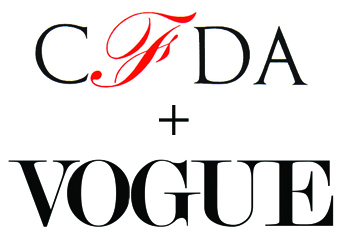Whenever a major player in the fashion industry uses its influence to better the world, we get all warm and fuzzy on the inside. Today Vogue magazine gets our Fashion With A Conscience Award for their decision to join forces with the CFDA and create the long overdue Health initiative which goal is to encourage all taste makers in our industry to encourage women and men to have a healthy physique. In a country where eating disorders are a true epidemic and where the images portrayed in fashion shows and fashion magazine are in some case at the root of the problem, the CFDA and Vogue are sending a strong message to the world and we hope it helps undo the damage that has been done over many decades. The fashion industry however is not the only one to blame since eating disorders are also triggered by chemical imbalances and psychological problems. Still, in our society being skinny is considered more beautiful and desirable than being full-figured or even being of average size and it needs to change. Here at F.W.A.C. we hope to live in a world where women are comfortable in their bodies and where little girls can feel beautiful no matter what their size and can grow up to be confident and healthy young women.
Will this come to pass? Well the report below is a good start.
Doutzen Kroes
Photographed by Annie Leibovitz, Vogue, April 2009
In January 2007, the Council of Fashion Designers of America (CFDA) with the support of Vogue announced its Health Initiative, which was created to encourage everyone in this country who works in fashion editors, designers, photographers, and casting directors alike to share the responsibility of fostering a climate where a vital and healthy physique is lauded and encouraged; it was always envisioned as an industry-focused enterprise and not one intended to tackle eating disorders globally. The CFDA Health Initiative set clear goals: specifying guidelines for a healthier diet; vowing to identify and help those vulnerable to eating disorders; establishing minimum age requirements for models; creating a model-mentorship program; and asking that models be provided with plentiful breaks and access to nutritious food during shoots and shows. For an industry that should be about empowering women of all shapes, sizes, and ages, too often the image of attractiveness it has projected has been entirely at odds with that message. Since then, thanks to the CFDA initiative, and to the honesty of Natalia Vodianova, Lara Stone, and Coco Rocha speaking out in this magazine and elsewhere about their negative experiences in the industry, there has been some progress. The CFDA Health Initiative broke the powerful taboo against revealing the pressures on girls to be extremely thin even if it meant affecting their health, something that hadn’t been previously publicly addressed by the fashion world, or for that matter, acknowledged.
So it’s with great pleasure that I can state that what started locally has now gone global. The eighteen other international Vogue editors and I cosigned a letter that furthers the CFDA’s amazing work by launching a worldwide health initiative, where we’ve committed ourselves to depicting healthy body images in our magazines. Many of my colleagues have been steadily working toward this already. I’m thinking of Italian Vogue’s Franca Sozzani dedicating whole issues to curvy and vivacious girls to encourage the idea that beauty comes in myriad forms; of Alexandra Shulman at British Vogue, who chastised designers for making the samples (the clothes shown on the runway that we also use for our shoots) so ridiculously small they fit only a few of the tiniest models; and of Emmanuelle Alt, who has recently put the likes of shapely actress Laetitia Casta and model Doutzen Kroes on the cover of French Vogue. Kroes has been, like her sisters in modeling, vocal about the challenges that she has faced, having been rejected in the past for not conforming to some inconceivable and offensive idea of how she should look and what she should weigh. For the record, the five-foot-nine Dutch model wears a 4. Yet to some in fashion, she is far too curvaceous. To everyone else, Kroes looks like exactly what she is—a particularly glowing and radiant example of gorgeousness.
I’ve learned that when the fashion industry comes together, real and lasting good can come out of it: The success of ventures like 7th on Sale, for instance, which was created in 1990 to raise funds for HIV and AIDS sufferers, simultaneously destigmatized discussion in our industry of this illness. Or Fashion’s Night Out, which was designed to get us all out shopping at a time when the economy was struggling, the industry was suffering, and we needed to be reminded that fashion was a vibrant and fun component of our lives. Adopting a global strategy on model health carries the same urgency. At Vogue we’ve just finished a commemorative book that will come out later this year to celebrate our 120th anniversary, and I was startled to see how many of the wonderful models we’ve worked with over the years the super era included would be considered far too big by today’s standards.
Of course, oversimplification of this crucial issue doesn’t help. Fashion has often been (wrongly) held up as an active agent in making women want to be excruciatingly thin, ignoring the complex genetic and psychosocial factors that contribute to eating disorders. Knee-jerk condemnation of many of the girls working today who are naturally blessed with slim bodies and exercise and eat well to maintain them is to be scrupulously avoided. So, too, is ignoring the way that obesity levels are rocketing upward, especially among the young, paving the way for all sorts of problems in the future. Making a stand with the Health Initiative signals renewed efforts to make our ideal of beauty a healthy one.
Anna Wintour’s letter from the editor in the June 2012 issue.




